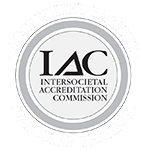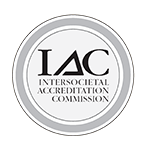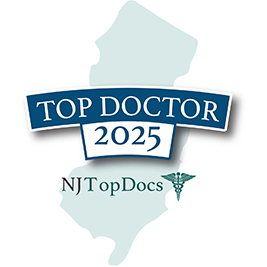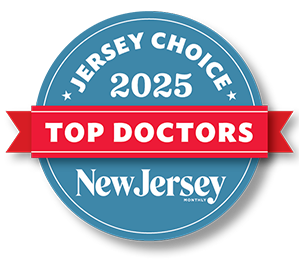
May is Stroke Awareness Month. Strokes are the second leading cause of death worldwide and a leading cause of disability. Understanding the warning signs and preventative methods to identify a stroke can help you lead a healthier life, which is one of our primary goals at The Cardiovascular Care Group.
As a combined practice, the Cardiovascular Care Group and Vein Institute of NJ focus on a variety of issues involving the arteries and veins of your body. And as board-certified vascular surgeons, we are able to provide some of the foremost diagnostics and treatments for these vascular issues.
One of the common issues we encounter with arteries is carotid artery disease. Some people develop clogged arteries as a result from a buildup of plaque on the inner walls of the arteries. Arterial plaque can reduce blood flow or, in some instances, block it altogether.
Clogged arteries greatly increase the likelihood of heart attack, stroke, limb loss, and even death. It is important to be aware, no matter how old you are, of the causes of artery plaque and treatment strategies to prevent serious consequences.
Stroke Warning Signs
Understanding these warning signs can help you save a life. In fact, 80% of strokes may be prevented, according to the National Stroke Association if people act soon. The acronym FAST is used to check a suspected stroke victim.
- F = Face Drooping: Does one side of the face droop or is it numb?
- A = Arm Weakness: Is one arm weak or numb? Ask the person to raise both arms. Does one arm drift downward?
- S = Speech Difficulty: Is speech slurred?
- T = Time to Call 911: Do this immediately.
Stroke Prevention: Treating Carotid Artery Issues
While there are many medical treatment options based on the severity of the disease, we want to focus on the preventative methods available to you. There are steps to lower the risk of carotid artery disease and stroke, all revolving around healthy living.
Smoking cessation is one of the most important as cigarette use is associated with many devastating health conditions, including damage and buildup of plaque within our arteries. Controlling your blood pressure and maintaining good cholesterol levels are also important, which relate to eating healthy and exercising regularly.
Let’s talk about some of these healthy living choices in more depth:
Smoking Cessation
Many people who smoke become addicted to nicotine, a drug that is found naturally in tobacco. This can make it hard to quit smoking. But the good news is there are proven treatments that can help you quit. According to the CDC, you can:
- Use Nicotine Replacement Therapy (NRT)
- Over-the-counter forms such as patches, gum and lozenges
- Prescription inhalers and nasal sprays
- Pill Prescription Medication
- Vareniciline
- Buproprion
- Combined Medications
- Use a long-acting form of NRT (nicotine patch) together with a short-acting form (gum or lozenge). Combining these forms can further increase your chances of quitting
- Counseling
- Can help make a plan to quit
- Can help prepare you to cope with the stress, urges to smoke and other issues you may face when trying to quit smoking
Using counseling and medication together gives you the best chance of quitting for good. Many of these treatments may be available to you free-of-charge or may be covered by your insurance. Call 1-800-QUIT-NOW to talk to a cessation advisor.
Blood Pressure
High blood pressure is a major risk factor for heart disease and stroke, both of which are leading causes of death in the US. Nearly one-third of all American adults have high blood pressure and more than half of them don’t have it under control.
When your blood pressure is high:
- You are 4 times more likely to die from a stroke
- You are 3 times more likely to die from heart disease
Even blood pressure that is slightly high can put you at greater risk. Blood pressure improves when you:
- Take your prescribed medicine
- Learn to measure blood pressure on your own
- Lower your risk with eliminating smoking and reducing alcohol intake, as well as following a proper diet and exercising (see below)
Cholesterol
About 38% of American adults have high cholesterol (total blood cholesterol ≥ 200 mg/dL). Too much cholesterol puts you at risk for heart disease and stroke. High cholesterol has no signs or symptoms, so the only way to know if you have it is to get your cholesterol checked. By living a healthy lifestyle, you can help keep your cholesterol in a healthy range and lower your risk of heart disease and stroke.
You can take medicine to treat high low-density lipoprotein (LDL) cholesterol. Statin drugs lower LDL cholesterol by slowing down the liver’s production of cholesterol. They also increase the liver’s ability to remove LDL cholesterol that is already in the blood.
Healthy Eating
In addition, eating healthy by altering your diet to foods low in saturated fats and trans fats can reduce high cholesterol. Saturated fats come from animal products (such as cheese, fatty meats, and dairy desserts) and tropical oils (such as palm oil).
Choose foods that are low in saturated fat, trans fat, sodium (salt), and added sugars. These foods include lean meats; seafood; fat-free or low-fat milk, cheese and yogurt; whole grains; and fruits and vegetables.
Salts, in particular, are a common staple in our diet. One way to cut back is to skip the table salt. However, most of the sodium in our diets comes from packaged, processed foods. Eating these foods less often can help reduce your sodium intake, lower your blood pressure and/or prevent high blood pressure (HBP or hypertension) from developing in the first place.
Sugar is another culprit in potentially increasing obesity and high blood pressure, although not all sugars are bad. There are two types of sugar:
- Naturally occurring sugars are found naturally in foods such as fruit (fructose) and milk (lactose).
- Added sugars include any sugars or caloric sweeteners that are added to foods or beverages during processing or preparation (such as putting sugar in your coffee or adding sugar to your cereal).
Try to replace your sugar intake by:
- Cutting back on the amount of added sugars you eat and drink.
- Buying 100% juice with no added sugars.
- Enhancing foods with spices. Try cinnamon, nutmeg, mint or ginger.
- Adding fresh or dried fruit to cereal and oatmeal.
- Drinking plain or sparkling water, unsweetened tea or sugar-free beverages.
Eat foods naturally high in fiber, such as oatmeal and beans (black, pinto, kidney, lima, and others) and unsaturated fats, which can be found in avocado, vegetable oils like olive oil, and nuts.
Along with sugars is the consumption of alcohol, which gets broken down into sugar in the body. Limiting alcohol consumption can also help to prevent high blood pressure. If you drink, limit your alcohol consumption to no more than two drinks per day for men and no more than one drink per day for women. A drink is one 12 oz. beer, 4 oz. of wine, 1.5 oz. of 80-proof spirits or 1 oz. of 100-proof spirits.
Exercise
Physical activity can help you maintain a healthy weight and lower your cholesterol and blood pressure levels. For adults, the Surgeon General recommends 2 hours and 30 minutes of moderate-intensity exercise, such as brisk walking or bicycling, every week. Make physical activity a part of each day. Take the stairs instead of the elevator, park a little farther away, walk to the store, or do jumping jacks during commercials.
As many people do not feel the effects of carotid artery disease, it is important that you maintain regular health check-ups especially if you are smoker and overweight. Your health and well-being are of the utmost importance to us.








